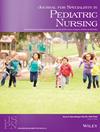Validation of the withdrawal assessment tool-1 (WAT-1) in pediatric cardiovascular patients on an inpatient unit
Abstract
Purpose
Sedation and analgesia are administered to critically ill patients, which may result in physical dependence and subsequent iatrogenic withdrawal. The Withdrawal Assessment Tool-1 (WAT-1) was developed and validated as an objective measurement of pediatric iatrogenic withdrawal in intensive care units (ICUs), with a WAT-1 score ≥ 3 indicative of withdrawal. This study's objectives were to test interrater reliability and validity of the WAT-1 in pediatric cardiovascular patients in a non-ICU setting.
Design and methods
This prospective observational cohort study was conducted on a pediatric cardiac inpatient unit. WAT-1 assessments were performed by the patient's nurse and a blinded expert nurse rater. Intra-class correlation coefficients were calculated, and Kappa statistics were estimated. A two-sample, one-sided test of proportions of weaning (n = 30) and nonweaning (n = 30) patients with a WAT-1 ≥3 were compared.
Results
Interrater reliability was low (K = 0.132). The WAT-1 area under the receiver operating curve was 0.764 (95% confidence interval; ± 0.123). There was a significantly higher proportion (50%, p = 0.009) of weaning patients with WAT-1 scores ≥3 compared to the nonweaning patients (10%). The WAT-1 elements of moderate/severe uncoordinated/repetitive movement and loose, watery stools were significantly higher in the weaning population.
Practice Implications
Methods to improve interrater reliability warrant further examination. The WAT-1 had good discrimination at identifying withdrawal in cardiovascular patients on an acute cardiac care unit. Frequent nurse re-education may increase accurate tool use. The WAT-1 tool may be used in the management of iatrogenic withdrawal in pediatric cardiovascular patients in a non-ICU setting.

 求助内容:
求助内容: 应助结果提醒方式:
应助结果提醒方式:


